Hadoop vs Palantir
June 03, 2023 | Author: Michael Stromann
18
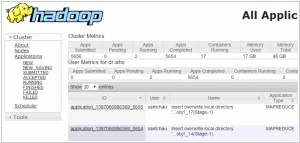
The Apache Hadoop software library is a framework that allows for the distributed processing of large data sets across clusters of computers using simple programming models. It is designed to scale up from single servers to thousands of machines, each offering local computation and storage. Rather than rely on hardware to deliver high-availability, the library itself is designed to detect and handle failures at the application layer, so delivering a highly-available service on top of a cluster of computers, each of which may be prone to failures.
0
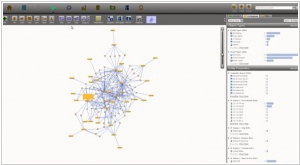
Palantir builds software that connects data, technologies, humans and environments. Organizations have data. Lots of it. Structured data like log files, spreadsheets, and tables. Unstructured data like emails, documents, images, and videos. This data is typically stored in disconnected systems, where it is rapidly diversifying in type, exponentially increasing in volume, and becoming more difficult to use every day.
Hadoop and Palantir are both powerful tools used in the field of big data analytics, but they serve different purposes and have distinct characteristics.
Hadoop is an open-source framework that provides a distributed processing and storage system for handling large datasets across clusters of computers. It enables parallel processing and fault-tolerance, making it well-suited for processing and analyzing vast amounts of structured and unstructured data. Hadoop consists of components such as the Hadoop Distributed File System (HDFS) for distributed storage and the MapReduce processing framework. It is widely used for batch processing, data warehousing, and data exploration tasks.
Palantir, on the other hand, is a commercial software platform designed for advanced analytics and data integration. It focuses on providing data integration, visualization, and analytics capabilities to help organizations make sense of complex and diverse data sources. Palantir's platform allows users to ingest, analyze, and visualize data from various structured and unstructured sources, including databases, files, and streaming data. It offers advanced features such as graph analysis, machine learning, and data governance, making it a comprehensive solution for data-driven decision-making and intelligence analysis.
While Hadoop provides a scalable infrastructure for distributed data processing, Palantir offers a comprehensive platform with sophisticated analytics capabilities. Hadoop is primarily a framework that requires additional tools and technologies to perform analytics, whereas Palantir provides an all-in-one solution with built-in analytics and visualization capabilities. Palantir also emphasizes data integration and collaboration, enabling teams to work together effectively on complex data analysis tasks.
See also: Top 10 Business Intelligence software
Hadoop is an open-source framework that provides a distributed processing and storage system for handling large datasets across clusters of computers. It enables parallel processing and fault-tolerance, making it well-suited for processing and analyzing vast amounts of structured and unstructured data. Hadoop consists of components such as the Hadoop Distributed File System (HDFS) for distributed storage and the MapReduce processing framework. It is widely used for batch processing, data warehousing, and data exploration tasks.
Palantir, on the other hand, is a commercial software platform designed for advanced analytics and data integration. It focuses on providing data integration, visualization, and analytics capabilities to help organizations make sense of complex and diverse data sources. Palantir's platform allows users to ingest, analyze, and visualize data from various structured and unstructured sources, including databases, files, and streaming data. It offers advanced features such as graph analysis, machine learning, and data governance, making it a comprehensive solution for data-driven decision-making and intelligence analysis.
While Hadoop provides a scalable infrastructure for distributed data processing, Palantir offers a comprehensive platform with sophisticated analytics capabilities. Hadoop is primarily a framework that requires additional tools and technologies to perform analytics, whereas Palantir provides an all-in-one solution with built-in analytics and visualization capabilities. Palantir also emphasizes data integration and collaboration, enabling teams to work together effectively on complex data analysis tasks.
See also: Top 10 Business Intelligence software
Hadoop vs Palantir in our news:
2014. Business analytics provider Palantir raises $50 Million
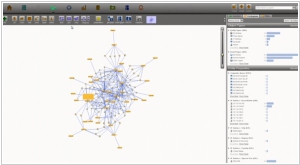
Palantir, the prominent big data company, has secured an additional $50 million in funding. With a valuation of $9 billion, Palantir already holds a position as one of Silicon Valley's most valuable private technology firms, alongside others that have experienced substantial increases in their worth in recent times. Founded by entrepreneur Peter Thiel in 2004, Palantir initially focused on providing its software, capable of identifying patterns within extensive datasets, to government agencies such as the CIA and NSA. As the year comes to a close, the company anticipates surpassing $1 billion in revenue and is actively seeking to expand its customer base. It has successfully marketed its data analysis technology to Wall Street firms seeking fraud detection capabilities and pharmaceutical companies aiming to streamline drug development processes. Notably, Hershey has leveraged Palantir's tools to uncover connections between weather patterns and consumer behavior.
2014. MapR partners with Teradata to reach enterprise customers
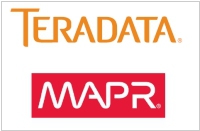
The last remaining independent Hadoop provider, MapR, and the prominent big data analytics provider, Teradata, have joined forces to collaborate on integrating their respective products and developing a unified go-to-market strategy. As part of this partnership, Teradata gains the ability to resell MapR software, professional services, and provide customer support. Essentially, Teradata will act as the primary interface for enterprises that utilize or aspire to use both technologies, serving as the representative for MapR. Previously, Teradata had established a close partnership with Hortonworks, but it now extends its collaboration and analytic market leadership to all three major Hadoop providers. Similarly, earlier this week, HP unveiled Vertica for SQL on Hadoop, enabling users to access and analyze data stored in any of the three primary Hadoop distributions—Hortonworks, MapR, and Cloudera.
2014. HP plugs the Vertica analytics platform into Hadoop
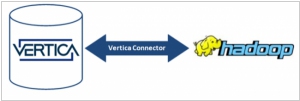
HP has unveiled the introduction of Vertica for SQL on Hadoop, a significant announcement in the world of analytics. With Vertica, customers gain the ability to access and analyze data stored in any of the three primary Hadoop distributions: Hortonworks, MapR, and Cloudera, as well as any combination thereof. Given the uncertainty surrounding the dominance of a particular Hadoop flavor, many large companies opt to utilize all three. HP stands out as one of the pioneering vendors by asserting that "any flavor of Hadoop will do," a sentiment further reinforced by its $50 million investment in Hortonworks, which currently represents the favored Hadoop flavor within HAVEn, HP's analytics stack. HP's announcement not only emphasizes the platform's interoperability but also highlights its capabilities in dealing with data stored in diverse environments such as data lakes or enterprise data hubs. With HP Vertica, organizations gain a seamless solution for exploring and harnessing the value of data stored in the Hadoop Distributed File System (HDFS). The combination of Vertica's power, speed, and scalability with Hadoop's prowess in handling extensive data sets serves as an enticing proposition, potentially motivating hesitant managers to embrace big data initiatives confidently. HP's comprehensive offering provides a compelling avenue for organizations to unlock the potential of their data, urging them to venture beyond their reservations and embrace the world of big data.
2014. Cloudera helps to manage Hadoop on Amazon cloud

Hadoop vendor Cloudera has unveiled a new offering named Director, aimed at simplifying the management of Hadoop clusters on the Amazon Web Services (AWS) cloud. Clarke Patterson, Senior Director of Product Marketing, acknowledged the challenges faced by customers in managing Hadoop clusters while maintaining extensive capabilities. He emphasized that there is no difference between the cloud version and the on-premises version of the software. However, the Director interface has been specifically designed to be self-service, incorporating cloud-specific features like instance-tracking. This enables administrators to monitor the cost associated with each cloud instance, ensuring better cost management.


